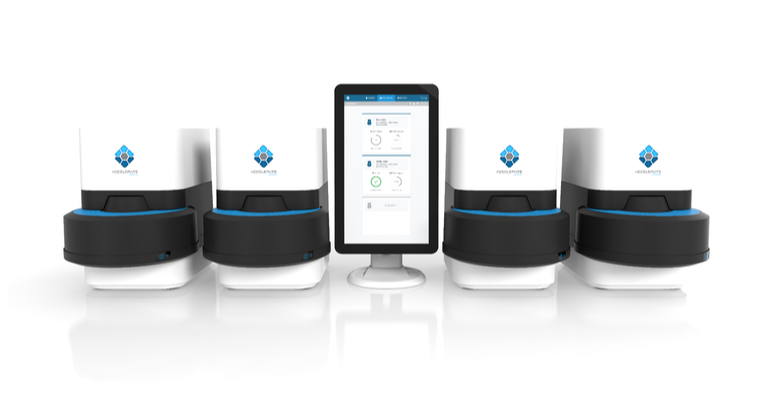What is antimicrobial resistance (AMR)?
Antimicrobial resistance (AMR) refers to the ability of microorganisms to withstand antimicrobial treatments. The development of resistance is a natural phenomenon that will inevitably occur when antimicrobials are used to treat disease. The problem at present is that the sheer volume of antimicrobials being used globally in humans, animals and in other situations is leading to significant increases in the rate of development of resistance making our current antibiotics less effective.
The World Health Organisation (WHO) has declared antimicrobial resistance (AMR) as one of the biggest global public health threats facing humanity. The development of AMR is a complex process which has been accelerated by our overuse and misuse of antibiotics.
How innovation can help combat antimicrobial resistance
Conventional bacterial cultures, coupled with susceptibility testing, require several days to produce results. These long turnaround times typically result in physicians using broad spectrum antibiotics to cover all potential aetiologies; often two or more antibiotics. This practice, in and of itself, leads to broader community AMR. For example, the rate of resistance to ciprofloxacin, an antibiotic commonly used to treat urinary tract infections, varied from 8.4% to 92.9% for Escherichia coli and from 4.1% to 79.4% for Klebsiella pneumoniae in countries reporting to the Global Antimicrobial Resistance and Use Surveillance System.[i]
As rates of resistance increase, more multidrug resistant organisms (MDROs) are emerging within our hospitals, further complicating the treatment of infections, even with broad spectrum antibiotics. This is a very concerning trend as without effective antibiotics, medical procedures such as organ transplantation, cancer chemotherapy, chronic disease management, and major surgery become very high risk.[ii]
The need for more effective antibiotics is greater than ever, yet few new antibiotics are in the development pipeline. Therefore change is required to limit antibiotic resistance, so that antibiotics remain a potent treatment option against infections, today and in the future.
To this effect, WHO has called for a joint global response to tackle AMR by optimising antibiotic use and investing in the development of new antimicrobial medicines and innovative diagnostic tools.[iii]Accelerate Diagnostics have answered this call by developing the Accelerate Pheno™ System; the first commercially available instrument to obtain FDA and CE-IVD approval for rapid, phenotypic antimicrobial susceptibility testing (AST).[iv] The Pheno™ System identifies common causes of bacteraemia, through fluorescent in situ hybridisation, as well as performing rapid AST via morpho-kinetic cellular analysis, direct from positive blood cultures.

Advantages of the Accelerate Pheno™ system
- Rapid results – I.D ∼90 mins and AST (with MIC) ∼7 h.
- Fully automated with <2 mins prep time.
- Entire process within 1 kit.
- Reduces consumption of broad spectrum antibiotics.
- Improved time to optimal therapy.
- Decreased hospital length of stay.
- Scalable to your labs requirements.
Knowledge of the antimicrobial susceptibility profile of a blood isolate as soon as possible is critical for optimal management and outcomes of patients with severe bloodstream infections or sepsis. Susceptibility results permit the de-escalation or escalation of antibiotics to appropriate definitive therapy. Providing physicians with innovative diagnostic tools such as the Pheno™ System enables a much needed shift from empirical to evidence-based treatments of infectious diseases. Shortened turnaround times allow targeted antibiotic therapy to be initiated sooner, reducing the time patients spend on broad spectrum drugs, therefore limiting the rate of resistance and improving patient care at the same time.
“The price of doing the same old thing is far higher than the price of change.” —Bill Clinton
Clinical microbiology laboratories (CMLs) have always aimed to produce timely results, but clinical microbiology has historically been one of the slower laboratory disciplines. Thanks to the Accelerate Pheno™ System this does not have to be the case!
Check out our other blogs related to this post here
Get in touch with our product specialist below to discuss the benefits the Pheno™ System can bring to your institution. For further information on the Pheno™ System and PhenoTest™ BC kit click here.
Get In Touch
Follow us on Twitter and LinkedIn for regular updates.
[i] Who.int. 2022. Antimicrobial resistance. [online] Available at: <https://www.who.int/news-room/fact-sheets/detail/antimicrobial-resistance> [Accessed 6 April 2022].
[ii] Pharmashots.com. 2022. Exclusive Interview with PharmaShots: John Meduri of Accelerate Diagnostics Shares Insight on Antimicrobial Resistance or AMR. [online] Available at: <https://pharmashots.com/6939/exclusive-interview-with-pharmashots-john-meduri-of-accelerate-diagnostics-shares-insight-on-antimicrobial-resistance-or-amr> [Accessed 6 April 2022].
[iii] Who.int. 2022. Antimicrobial resistance. [online] Available at: <https://www.who.int/news-room/fact-sheets/detail/antimicrobial-resistance> [Accessed 6 April 2022].
[iv] Doern, C., 2018. The Slow March toward Rapid Phenotypic Antimicrobial Susceptibility Testing: Are We There Yet?. Journal of Clinical Microbiology, 56(4).


